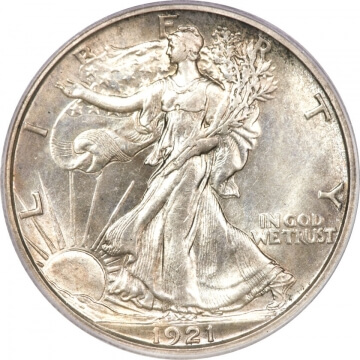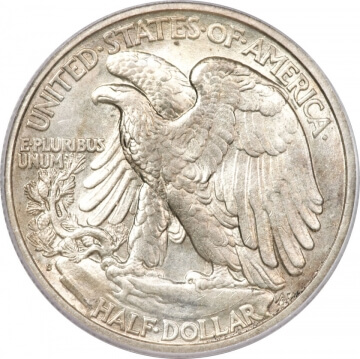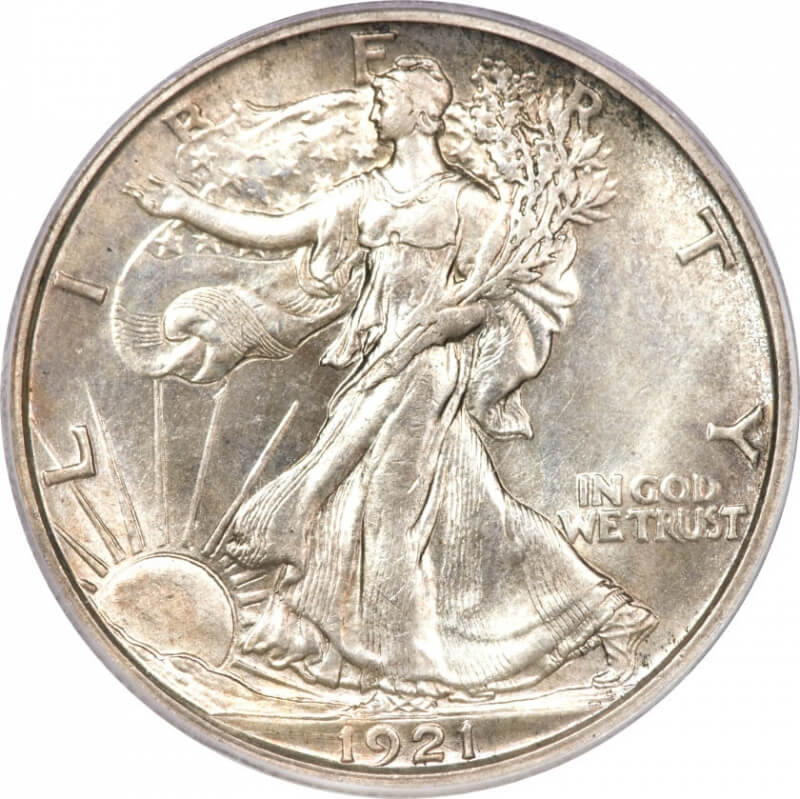**Every day this week we will highlight submissions from the My Coin’s Story Young writing contest. Young Numismatists were asked to write a historical fiction story based on a favorite coin. The winners will be revealed on the blog on Friday, Dec. 19.
By Nicholas Baldwin
My name is Nicholas
Baldwin, and I am sixteen years old. I live in Colorado Springs, Colorado, and
I have been a member of the ANA for three years. A few months ago I purchased a
1921-S Walking Liberty Half Dollar, my first true key date coin, from
Hallenbeck Coin Gallery in downtown Colorado Springs. The coin is graded NGC
G-6 and is in an EdgeView holder. The rims are all intact except for a small
patch at 9 o’clock on the reverse where it is worn smooth. The fields are
fairly mark-free, with very few noticeable scratches or pits. If help up to the
light just right, a small amount of reddish-orange toning is visible on the
obverse, between the “L” and “I” in “LIBERTY”.
Its appearance is about what one would expect from a coin in Good
condition. It appears to have been circulated for several decades before its
scarcity was recognized and it was put into a collection. Or perhaps it was
saved initially, then spent when it was truly needed.
In 1921, the United
States was vastly different than it was today. America had just ended the First
World War and its economy was booming. The “Roaring Twenties” was just
beginning, a bright star of success in American history. The San Francisco Mint
made just over five hundred thousand half dollars that year, a tiny number
compared to the six and a half million minted in 1920. In 1921, fifty cents
still had legitimate buying power. A dozen eggs, four gallons of gasoline, and
a pound of coffee could all be bought with this one coin. In the 1920s,
numismatics had not yet become widely popular, so the small mintage went
relatively unnoticed. However, there were a few savvy collectors who were aware
of this potential rarity. Isaiah Hellman, a Wells Fargo banker, invested $30 in
three rolls of brilliant new half dollars as soon as they arrived at his bank.
At the end of the day, he took them home and put them in his safe next to other
rolls of potential rarities. Having lived in San Francisco for thirty years, he
had picked out other low-mintage issues such as the 1909-S Indian and Lincoln
cents, 1912-S nickels, various dimes, and even a roll of rare 1901-S quarters.
For Christmas 1923, Hellman decided to open up one of the rolls and give the
coins to his grandchildren as gifts. One lucky recipient of a ‘rare’ half
dollar was a boy named Richard Hammond, who was only nine years old at the
time.
Ten years later, Richard
was nineteen years old and looking for work in the height of the Great
Depression. He searched desperately for money to buy food with, but it was
difficult. In a box under his bed he found a shiny half dollar dated 1921. He
remembered receiving it as a gift from his late grandfather the banker. Since
he did not know his grandfather well and could not remember what was so special
about the coin, he spent it on a ham from the butcher for his family. Later
that week, the butcher gave the coin to a wealthy visitor from Baltimore in
change. The visitor, a Mr. Louis Eliasberg, was on vacation to visit relatives.
Eliasberg had acquired his wealth through banking, which was the only way he
could afford to travel cross- country by train. Although he was a banker, he usually
ignored newer silver coins. However, on the long ride home, he was bored enough
that he pulled out his change to see what he had. The 1921 half jumped out at
him. Having only been in circulation for one day, it was in beautiful Mint
condition. As he examined it more closely, Eliasberg remembered that all
1921-dated halves were made in small numbers. He could easily obtain one from
his bank if he wanted, but they were very unlikely to be marked with an “S”
since the San Francisco Mint was three thousand miles away. Consequently, he
decided to keep it. At his home in Baltimore, he put it in a cabinet with other
interesting pieces he had found in circulation. A few years later, one of his
banker friends gave him an even better example of the same issue, and since he
only saw the need for one in his collection, the 1921-S became his pocket
piece. For the next several years, the half dollar went everywhere Eliasberg
went. Finally, it was supplanted by a Peace dollar so the he could once again
have a glittering metal work of art to admire whenever the mood struck. Having
served its purpose to the banker, the half dollar was sold to a local dealer in
a mixed lot of other coins.
By 1943, the Walking
Liberty half was still in production. In fact, half dollar production hit a new
high with nearly seventy-eight million coins produced from the three mints
combined, a vast increase from the mere one million pieces minted in 1921.
Since the design was not yet obsolete, serious numismatists generally ignored
them. Interestingly, more casual collectors saved them than self-titled
numismatists did. A good reason for this was the wartime rationing due to World
War II. With a reduced number of products to spend their money on, people
(particularly younger people) began collecting the money itself. The advent of
blue Whitman folders made it easy to organize a collection and only made it
easier to save the better coins from one’s pocket change. A young boy who
worked newspaper route in downtown Baltimore had taken up this new hobby. He
wanted to be different from his friends, who all had folders full of ‘pennies’,
so he set his sights on the biggest coin he could find in change: half dollars.
The old Barber design would not do, since most of the examples he found were
worn nearly slick. The only other choice was the current series. Over the
period of a few years, the boy found the majority of the coins in circulation
in varying states of preservation. Some of the branch mint issues took a while
to find, but eventually he had a nearly complete set. Only a few of the early
Denver and San Francisco coins remained elusive. One day, he passed a shop with
“We Sell Coins” written on the window. His interest piqued, he walked in and
saw a tray of his half dollars in a glass case marked “rare dates- $1 each”.
After searching through a few dozen coins, he found a worn 1921-S. Remembering
the empty hole in his folder, he purchased it without hesitation.
Sixty years later,
the boy was in his seventies and living in Colorado Springs, Colorado. His
interest in coins had not abated since his paper route days, and he had a fine
collection. One day, while looking for Christmas lights in his basement, he
found a forgotten box full of blue Whitman folders from his childhood. He knew
that some of the coins were worth much more than he had bought them for, so he
picked out the more valuable ones to preserve. The man sent a half dozen of
them to NGC, a company he had seen advertised in Coin World magazine. Among them was the 1921-S he had found in that
tray so long ago. When they came back, they were all graded between Good and
Fine. Having no practical use for them anymore, he sold them as a group to his
usual dealer, Hallenbeck Coin Gallery in south Colorado Springs. A few months
later, I came in with fifty dollars in my pocket looking for something to add
to my collection. I found the ’21-S in a row of slabs priced at $59. Since I
was nine dollars short, I put it back. However, Chad, the helpful store
manager, said he could sell it to me for fifty. Thus, I purchased this half
dollar and my first real key date. I do not plan on selling this coin unless it
is for a higher grade example of the same coin. For now, however, it will stay
on my coin box with the rest of my collection.


